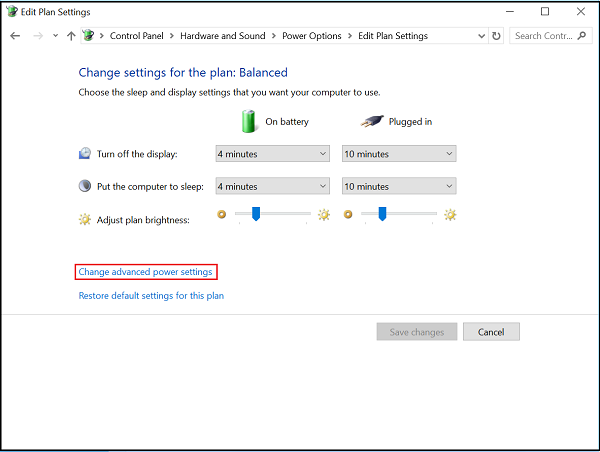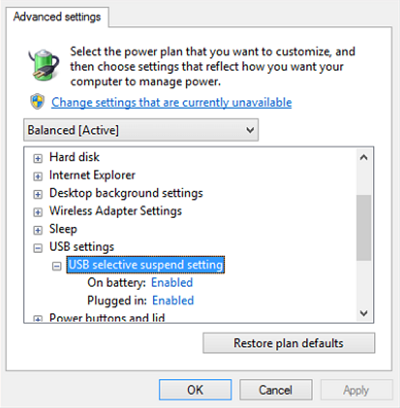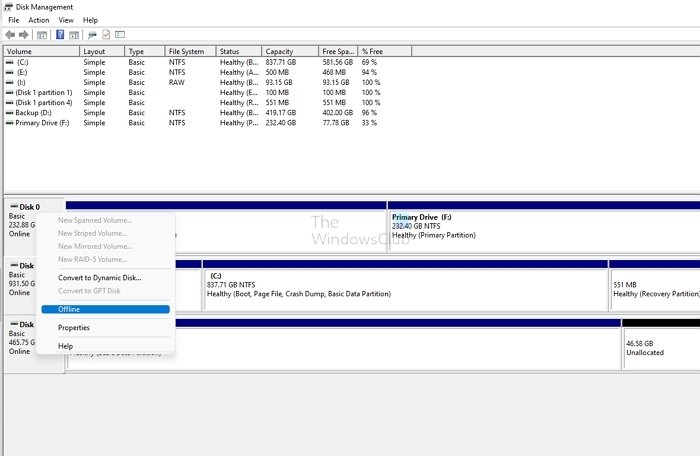Sometimes our PC fails or refuses to recognize the External Hard Drive even after confirming the successful connection. The problem occurs mostly when the device driver is either corrupted or outdated. Such problems can be quite tricky to fix. You can spend hours but find no solution. Try these workarounds and see if the problem of the External Hard Drive not being detected in Windows 11/10/8/7 is resolved.
Why is my external hard drive not showing up on my computer?
If your external hard drive is still not working, you may unplug it and try a different USB port. If it’s plugged into a USB 3.0 port, you can try plugging it into a USB 2.0 port. If it is plugged into a USB hub, try plugging it directly into the PC instead and see if that works.
External hard drive not showing up or detected on PC
Before you begin, unplug the external hard drive from the port and insert it into another port. If it works, maybe your first port is dead. Alternatively, use another USB and check. If it works fine in both ports, perhaps your USB is dead.
How do I fix Windows not recognizing my external hard drive?
If the External Hard Drive is not recognized, showing up, detected, working or accessible even after plugging it into Windows 11/10, follow our suggestions:
- Run the Troubleshooters
- Update or Reinstall the device driver
- Create a new partition on your removable drive
- Disable USB selective suspend setting
- Enable and Format the Drive in Disk Management
- Try Another USB Port (or Another PC)
- Clean the Disk and Start From Scratch
Let us see these in detail.
1] Run the Troubleshooters
The first thing you want to do is run the Hardware and Device Troubleshooter and the Windows USB Troubleshooter and check if it helps. The automated tools check the hardware/USB connected to the computer for any known issues and fix them automatically.
You could search for them via your Start Search, or you can access these Troubleshooters via the Windows 10 Settings Troubleshooter page.
2] Update or Reinstall the device driver
To do this, go to Device Manager by pressing Win+R together to open the “Run” dialog, enter devmgmt.msc. Next, locate the external device from the list. If you see a yellow/red sign appearing against the driver, right-click on its name and select “Update Driver Software…”. Also, if you find any “Unknown device”, update it too. Select “Search automatically for updated driver software” and then follow the instruction to finish the process.
If this does not work, uninstall and then reinstall the driver.
This post will show you how in detail to update or reinstall device drivers.
3] Create a new partition on your removable drive
If you never connected your hard drive to your PC earlier and are trying to connect it for the first time, the drive may not be detected since you do not have any partitions created for it. However, the same may be recognized by the Windows Disk Management tool. So, verify if the Disk Management tool can locate the external hard drive.
Open Disk Management tool, go to Search, type diskmgmt.msc, and press Enter. If the external drive is found listed in the Disk Management window, format it properly so that it shows up next time you connect it to your PC.
If you see that the drive is unpartitioned or unallocated, the format and then create a new partition there and see.
If you need detailed explanations, this post shows how to create a new Partition using Disk Management Tool.
4] Disable USB selective suspend setting
If the methods mentioned above do not yield the desired results, try disabling the USB selective suspend setting. Here’s what you can do.
Open Power Options from the Control Panel and navigate to Additional power settings. Next, click on the ‘Change plan settings’ option adjacent to your selected power plan.

Then go to ‘Change advanced power settings and under USB settings, find USB selective suspend setting, and set it to Disabled.

Click Apply and exit.
You may also uninstall problematic drivers via Device Manager. Another solution would be to change the portable hard drive letter or backup all the important files first and then format the external hard drive using Disk Partition Software.
5] Enable and Format the Drive in Disk Management

You will need to check if the drive is in Offline mode using the built-in Disk Management tool. Open Windows Search (Win +S) and type disk management. Once the tool appears in the list, click to open.
You should be able to see all connected drives in the list. The one that is not available on the PC will look greyed out. Right-click on it, and choose to enable. Done that, you can then format the drive so it can finally appear in Windows Explorer.
6] Try Another USB Port (or Another PC)
It is possible that the USB port may have an issue depicting any hardware. Most of the laptops and desktops come with multiple USB ports, and one of them should work even in the worst case. You can also cross-check in the BIOS if the USB port is disabled, if yes, then enable it.
7] Clean the Disk and Start From Scratch
If nothing works on your PC, then the best bet is to connect to another PC and format the DISK on that computer. Once done, connect the disk back to the computer on which you want to use it.
How do I get Windows 11/10 to recognize my external hard drive?
Before you begin, make sure your Windows PC is optimized. Run the Hardware Troubleshooter by clicking on Settings app > Update & Security > Troubleshoot > Hardware and Devices > Run the Troubleshooter.
If you cannot find it there, you can run the following command on elevated Windows Terminal to launch the Hardware Troubleshooter.
msdt.exe -id DeviceDiagnostic
How do I fix my external hard drive not showing files?
If you have just connected your drive, wait for a few seconds to let Windows load everything. However, if it’s been a while and there are no files, you will need to run the Disk Check software from the OEM or CHKDSK in Windows to fix any header or master table corruption.
Assign Drive Letter to Hard Disk Volume
Unless a drive letter is assigned to Hard Disk, it will not show up in the File Explorer. You will need to use the Windows Disk Tool to achieve this.
- Type Disk in the Windows search and then click on Create and format hard disk listing.
- Find the Disk in question, and right-click on the volume or partition
- Choose Change Drive Letter and Path.
- Once done, File Explorer should instantly recognize it.
If you do not see any volume and everything appears in the black border for the hard disk, it means the disk has not been initialized. You can right-click on it and create partitions by setting up a size. The volumes will be formatted as well.
How do I fix my external hard drive not showing files?
If the drive is available on the PC, but you cannot see any image, check if the files are hidden. You can enable the View Hidden File option using the File Explorer.
Why did my external hard drive suddenly disappear?
It happens when the connection is not set properly. Check if the USB plug to which the drive is connected is loose. If that’s the case, you need to get a new pair of wires that you can connect to the PC. If this is not the problem, the hard drive has an issue, and you may want to get it checked.
Where did my files go from SSD?
If you are not the one deleting the field from your SSD, then it won’t vanish on its own. Check if there is a program you are using that moves from this drive to somewhere else. Some external drives also come with a hardware lock that blocks any kind of modification. If you have one such, then enable it.
Let us know if anything here helped you.
If you need more ideas, see these posts: